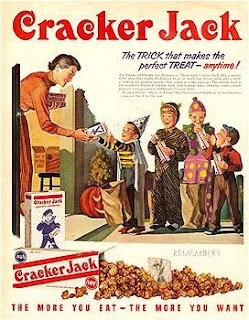
For the last few years, newspapers have borne the brunt of declining fortunes while their circulation erodes as quickly as the sands on a beach facing a tsunami. But the reality is far from the perception that newspapers will disappear.









“Last click” attribution, however, oversimplifies the stream of consciousness (or unconsciousness) always ignoring the contribution of campaign impression delivery before the last click …. which leads to a purchase or action. Weaving the impact of offline impressions into the equation adds to the confusion as media vendors jockey for credit. The landscape is littered with land mines that are confounding both marketers and vendors into “paralysis-analysis”.
In an effort to help “solve” the problem of overlapping exposures across digital media channels, Atlas and DoubleClick have enabled Universal Action Tags and Floodlight Tags leading to conversion mapping and event tracking through attribution logic. The problem is not yet solved, however, as the application of values to all considered campaign impressions is always debatable.
When did the controversy begin? When will it end? Are marketers looking for deeper insights into the effectiveness of their online media investments and placements? Or, are media vendors across participating campaign channels looking for a larger piece of the media investment pie?
Both parties are, naturally, catering to their own agendas. Marketers and their agencies want deeper insights into ad effectiveness, while the media vendors want credit leading to shared payments for their CPA placements. In the case of CPA campaigns it is not uncommon (although wrong!) for marketers to pay vendors more than once for the same sale. It’s a slippery slope that can only lead to more backroom payment headaches for the agencies and marketers playing the CPA game. Contrary to the machinations and plotting of vendors I have worked with, it is my guess that shared payment scenarios will never happen and the thought of ever securing monetary credit for “view through” assignments are as far off as the colonization of Mars.
For those vendors hawking CPM campaigns, the real benefits derived from attribution technologies will ultimately lead to higher markups for targeted and optimized inventory as it is considered premium …. higher CPMs, less waste and better returns.
Having had the opportunity to debate both sides of the controversy with vendors and agencies, it is the agencies and marketers, in my opinion, that wish to provide a clearer perspective into the ultimate value of attribution technologies.
The controversy will continue until such time that better research initiatives, with proper test and control groups, is conducted in order to provide more clarity. Under the aegis of independent industry associations (Internet Advertising Bureau and Advertising Research Foundation) marketers and agencies eager to gain better insight into attribution models should be encouraged to petition and subsidize qualitative research in this arena. The time for development, sharing and adoption of best business practices for attribution logic has been too long coming.


According to one of the first independent surveys carried out by the University of California and University of Pennsylvania, two thirds of Americans object to targeted online ads.
A proposed amendment to an EU privacy directive states that national governments should "ensure that the storing of information, or the gaining of access to information already stored, in the terminal equipment of a subscriber or user is only allowed on condition that the subscriber or user concerned has given his/her consent, having been provided with clear and comprehensive information."
The amendment, if approved, would have negative implications for the online advertising community, which relies on the placement of cookies on hard drives to enhance the relevance of online ads.
Is the US next in line for government regulation? Recent session debates at AdTech and OMMA suggest that self-regulation may not be enough to stem rising criticism against the harvesting of consumer data.
In the coming weeks, this blog will initiate a debate on platforms that may provide alternatives to government regulation. Stay tuned.


House Minority Leader Lawrence F. Cafero Jr., R-Norwalk, pictured standing, far right, speaks while colleagues Rep. Barbara Lambert, D-Milford and Rep. Jack F. Hennessy, D-Bridgeport, play solitaire Monday night as the House convened to vote on a new budget. (AP)
The guy sitting in the row in front of these two... he's on Facebook, and the guy behind Hennessy is checking out the baseball scores.
These are the folks that could not get the budget out by Oct. 1,.... Seriously!






































